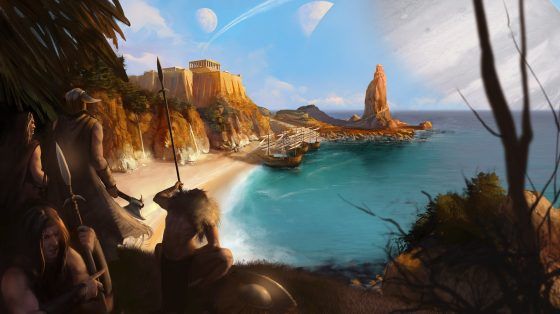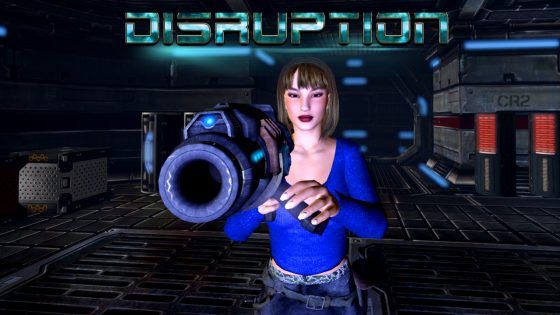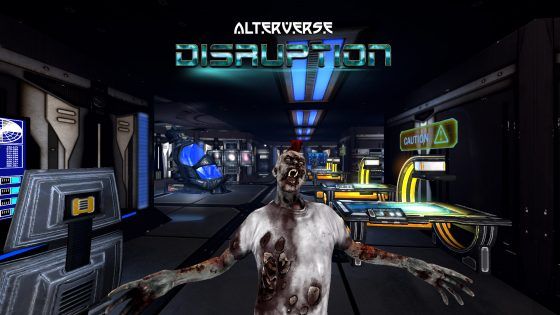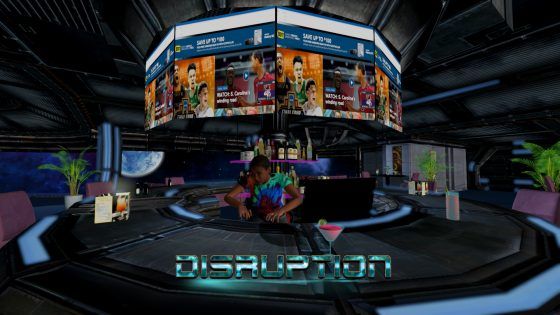Games are a creative medium with nearly infinite possibilities and dozens of ways in experiencing them. Every year playing and developing video games becomes more widespread and accessible as tools and systems become not only more affordable, but easier to grasp and understand. Since the early 2000’s developers have been making and sharing their games on websites like RPGMaker.net. One developer, Dog Star VR Studios, is looking to take that a step further and not only give gamers a community universe to explore, but developers the tools and universe to easily create their own aspiring games in. AlterVerse is intended to be just that project, hosted in a community developed multiversal landscape but built on the basis of Blockchain technology.
Blockchain is a term we’ve been hearing off and on in the Games Industry since 2014, but most people simply are unsure what it means, despite having accessed very similar systems for most of their internet careers. First digitally developed by a body known as Satoshi Nakamoto in 2008, Blockchain was then later implemented into popular cryptocurrency Bitcoin, and has since exploded onto the internet as a means of publicly recording and decentralizing transactions. Managed anonymously using peer-to-peer networks and distributed by a time-stamping server and secured cryptographically, Blockchain is used to log data (such as monetary transactions) by independent, self-interested users and managed by the same in a public and transparent manner. Much like a real-world economy this ‘public ledger’ ensures that the digital currency tallied within maintains its value and is open for any interested or invested party to inspect whenever they wish, meaning no one group could alter it for fear of social repercussions. Decentralizing it among a peer-to-peer network and a server means that if the server should ever go down, all its users still have a permanent copy of the data transmitted.
Now this is greatly oversimplifying the concept of Blockchain, and even in several hours of research I myself was not able to entirely wrap my head around so vast a concept. One of my personal colleagues explained the concept to me as, “Imagine a Wikipedia page, where every user’s account is logged when it interacts with a page. That way a community of contributors develops new content for that page, while that same community then verifies the information for accuracy. No one will really want to step out of line unless they want to get ejected from the community for mucking around with the page. No one will be able to muck around with other user’s accounts to make those changes, because it’s all secured thanks to a password only that account’s owner can decrypt!”

Blockchaining was first introduced into gaming in February 2014 with the release of Huntercoin. In this game, players earned a specific in-game currency by competing with each other in card battles. This HunterCoin(HUC) currency could later be exchanged for BitCoin securely due to the game’s inner BlockChain systems, but the game’s success was hampered by a wide exchange of issues. One of the game’s main abilities, Destroy, caused players to detonate like a nuclear warhead, killing players and scattering their HUC for other players to pick up. The game also suffered from a lack of moderation, its chat window open-sourced and rife for abuse and inappropriate content. Even the gameplay itself had fundamental design problems due to the core concepts of Blockchain.
Moving characters became intrinsically painful the more one played Huntercoin; as each individual player was registered on the Game User Interface of every other player, each player was forcibly rendered in real time by the Peer-to-Peer transfer. The biggest hitch of Blockchain decentralization is that only so many calculations can be done every second. Eventually, if you continue to scale your world and the actions done within it, you will hit a limit for what some people in the chain can reasonably render, resulting in massive slowdowns. Without a central server to register player movement and interaction, that burden was then placed on every computer currently playing Huntercoin and then slowed down by weaker members of the chain, resulting in mass slow-downs across the player base that took minutes to move a character just a few spaces forward.
Fast-forward a few years to AlterVerse: Disruption’s appearance on Kickstarter. Having been in development since 2009, the AlterVerse engine was designed to be a building block system for players; an MMORPG that players could develop content for other players to interact with in any genre or vein imaginable. According to our own past coverage creators can inject fully moddable game worlds into the AlterVerse, modifying terrain, jumping between genres and developing strongholds throughout the solar system. It’s clear from the beginning that the intent for AlterVerse is to be a world-built MMO in the most literal sense.

Players can be adventurers, raiding player designed ships and dungeons or developing their own storefronts and businesses in game. Turning each players computer into a P2P server, players host their content as they play reducing problems games such as Huntercoin faced previously in the past while players helm their own village, starship or war-table.
No matter the focus the AlterVerse runs on the Arn, its own form of cryptocurrency generated and mined through in-game activities in the AlterVerse. Players can exchange it much like its own currency, charging other players to access content they develop or barter between others for services. Intended to work on a Subscription model, AlterVerse’s main appeal aside from creating and playing one’s own worlds with the Pro Editor tool is indeed the hunt for Arn and the payout for crypto, as their advertisements look to draw in those looking for additional revenue and business to jump into the Alterverse.
 One of several different monetization related adverts for AlterVerse, this one targeted at game asset creators.
One of several different monetization related adverts for AlterVerse, this one targeted at game asset creators.
AlterVerse would later emerge onto Steam Greenlight, Valve’s Community voting feature prior to its retirement in early 2017. Greenlit, AlterVerse then began beta-testing, allowing users to play an unfinished version of its first content module, AlterVerse: Disruption, as well as demoing the other in-game systems and generating their own world content. AlterVerse: Disruption later emerged onto Kickstater in August of 2018, looking for $3000 USD to finish off the first of nine content modules currently in development for the AlterVerse platform. There the main rewards were exclusive Citizenships, premium accounts that never had to pay their subscription fee which could later bought and sold on AlterVerse’s player-driven market.

Sporting full-fledged avatar creation and development, it appears that Dog Star VR is putting their best foot forward for their first major development project. Right now their main focus is Disruption, their Sci-Fi shooter model toting ship-to-ship dog-fighter combat, death match modes and more throughout its Kickstarter project listing. The scope is certainly concerning, advertising that AlterVerse could host almost any game mode imaginable on the game’s main Twitter page. However, to the game’s credit it may be the first to ever actually do such a thing; with user generated content to pad out its repertoire, Dog Star merely needs to show that engaging story-telling and level design can be done in the game’s somewhat limited engine.
Now aside from what AlterVerse is pushing as a Black Desert-esque, “live your life,” MMORPG, it’s hard to look past the surface positively. When one talks about studios developing multiple games at the same time, even on the same engine, there is bound to be shortcomings across the board between games. In examining AlterVerse’s official art the in-game models and textures are far below the acceptable standard that most players expect from an MMO in the last few years, let alone 2018.
In comparison, even the original models from World of Warcraft, an engine nearly 20 years AlterVerse’s senior, look far superior. With this game boasting Virtual Reality support, its hard to see what would attract players to even assembling a VR headset to enter this low-res world. In making up for poor art direction, Alterverse seems instead to be focusing on a variety of features; examining their Kickstarter page, the developers are attempting to pack in a whopping 29 separate gameplay features, 17 of which most MMO players would consider incredibly basic or fundamental to modern MMOs and only another 7 which others would consider to be extraneous depending on the genre of MMO. However, as AlterVerse is intending to literally cover every possible genre of fantasy its hard not to see why the breadth is potentially far greater than the depth.

Ultimately AlterVerse has a very specific crowd it’s trying to cater to, and its not the traditional MMORPG market in my honest opinion. In assembling its machine, Dog Star VR is really targeting those who want to work on creating their own content primarily while potentially exploring the world enough to economize and develop their horizons in a stiff MMO design. Economists and creators will, in my opinion, get the most out of adventuring in this universe; from maximizing profits on the in-game market to churning out content for other players to explore. In marketing to just this particular group, however, the AlterVerse feels as if it lacks any sense of major identity throughout. While there are screenshots of upcoming content packs there is only predominately advertisements of Disruption, and even then they hardly talk about what Disruption is all about. It leaves AlterVerse feeling as if its simply a shell for a greater monetization vehicle, and lacks any sense of charm or draw aside from that.
Frankly, there is a lot of economic promise in the vast galaxies and worlds of AlterVerse, if there's a player base to be captured for it. But with a startling 9 content packs in development and their Early Access already slipping past its Q3 2018 launch, one can’t help but feel concerned that perhaps this universe might be a little too big for just one team to handle.